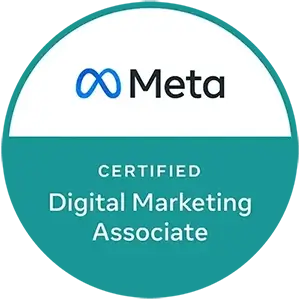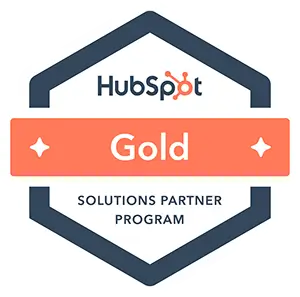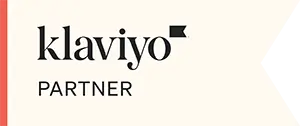Structured data on a website is data organized in a precise and standardized manner, usually in the form of tables or databases. It allows information to be stored and managed efficiently and made easily accessible.
Structured data can include information about products on an e-commerce site, articles on a blog, events on a calendar, etc. It is generally used to populate web pages and can be used by computer programs to perform automated analysis and processing.
There are several reasons why it can be useful to have structured data on your website:
Facilitate information management: Structured data allows information to be stored in an organized and standardized manner, making it easier to manage.
Improve the quality of information: By using structured data, it is easier to ensure that the data is accurate and up-to-date, which can improve the quality of the information presented on the site.
Optimize SEO: Search engines are placing increasing importance on structured data, and can better understand and index site content if it is organized in a structured manner.
Facilitate data access: Structured data is easy to query and exploit by computer programs , which can be useful for implementing advanced functionalities (advanced search, personalized recommendations, etc.) or for performing automated analyses and processing.
Improve user experience: By presenting information in a structured and organized manner, it is easier for users to find and understand the information they are looking for, which can improve their experience on the site.
It's true that structured data can help improve a website's search engine ranking. Here's how:
Make it easier to index pages: Structured data can help search engines better understand the content of pages and index them more accurately.
Provide contextual information: Structured data can provide additional information about pages (such as the price of a product, the date of an event, etc.), which can help search engines better understand the context of pages and rank them more relevantly in search results.
Promote the display of rich snippets: Structured data can be used to display rich snippets in search results, which can attract users' attention and improve click-through rates.
It is important to note, however, that structured data is just one element among others that can influence a site's SEO . It is also necessary to take into account other factors such as the quality of the content, the presence of quality external links, the performance of the site , etc.
Structured data can also be used to improve the presentation and display of content on social media. By using structured data markup (such as those offered by Facebook's Open Graph data schema), you can specify how your site's content should be displayed and presented when shared on social media. For example, you can specify an image to use as an illustration, a title and description for sharing, and so on.
By using these tags, you can control how your content appears when shared on social media, which can help improve its visibility and appeal to users. This can be particularly useful for e-commerce sites , which can use structured data to attractively present the products offered for sale.
Here are some best practices to follow when it comes to structured data on a website:
Use standardized data schemas: There are several standardized data schemas (such as schema.org) that allow for the accurate and standardized description of different types of information (products, articles, events, etc.). Using these schemas makes data easily understandable by search engines and other computer programs.
Ensure data is accurate and up-to-date: It is important to ensure that structured data is accurate and up-to-date so as not to mislead or disappoint users.
Use structured data markup on web pages: To make structured data usable, it must be "marked up" in the HTML code of web pages using special tags. It's important to follow the syntax and rules of these tags so that the data can be correctly interpreted by search engines and other computer programs.
Don't overload web pages with unnecessary structured data: There's no point in "overdoing" web pages by adding too much unnecessary structured data. You should only add structured data that is relevant and useful to both the user and computer programs.
Test and validate structured data: It is important to test and validate structured data to ensure that it is correct and that the markup used is correctly interpreted by search engines and other computer programs. There are several online tools that can help you test and validate your structured data.
Concretely, we have an example of structured data to describe a product from an e-commerce site, using the standardized data schema schema.org:
<div itemscope itemtype="http://schema.org/Product">
<h1 itemprop="name">Organic cotton T-shirt</h1>
<img itemprop="image" src="tshirt-coton-biologique.jpg" alt="Organic cotton t-shirt">
<p itemprop="description">A comfortable and eco-friendly T-shirt, made from organic cotton.</p>
<p><strong>Price:</strong> <span itemprop="price" content="19.99">€19.99</span></p>
<p><strong>Availability:</strong> <span itemprop="availability" content="InStock">In stock</span></p>
</div>
Here is an example of structured data to describe a service (a yoga class) offered by a website , still using the standardized schema.org data schema:
<div itemscope itemtype="http://schema.org/Service">
<h1 itemprop="name">Online Yoga Classes</h1>
<img itemprop="image" src="cours-yoga.jpg" alt="Online yoga classes">
<p itemprop="description">Online yoga classes suitable for all levels, to improve your flexibility and well-being.</p>
<p><strong>Price:</strong> <span itemprop="price" content="49.99">€49.99</span></p>
<p><strong>Duration:</strong> <span itemprop="duration" content="PT1H30M">1h30</span></p>
</div>
In these examples, structured data is "marked up" in the HTML code using "itemprop" tags that indicate the type of data (name, image, price, etc.) and "content" tags that contain the data value.
In this example, the "meta" tags with the properties "og:title", "og:type", "og:image", etc. allow you to specify the title, type, image, URL, description, site name, and price of the product to display when the page is shared on Facebook. There are many other Open Graph properties that can be used to describe different types of content (articles, events, etc.).
In short, it is useful to use structured data for a service or e-commerce website in order to facilitate the management and organization of information, improve the quality of the information presented on the site or on social networks, optimize the SEO of the site, facilitate access to data for robots & improve the user experience by making the information more easily accessible and understandable.
Ready to dominate SEO and drive more traffic to your website? Don't miss our The Ultimate SEO Guide , a must-have e-book that reveals all the winning strategies for optimal online visibility!
Learn how to improve your search engine rankings , attract a targeted audience, and boost your organic growth.
Click here to download your free copy and become an SEO expert! Don't miss this opportunity to transform your online presence and generate more success for your business . Download our guide now !
To learn more about SEO and artificial intelligence
At Bofu, we approach SEO in all its dimensions: technical, editorial, local, multilingual, and even in connection with the new capabilities of artificial intelligence.
Explore our specialized SEO services :
Also discover our analyses on the impact of AI in the world of SEO:
And if you want to deepen your knowledge of traditional and advanced SEO:

















